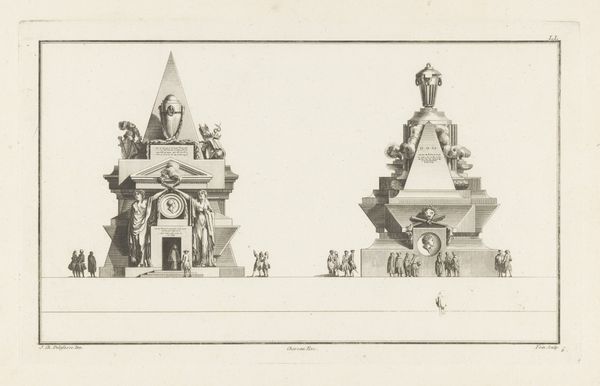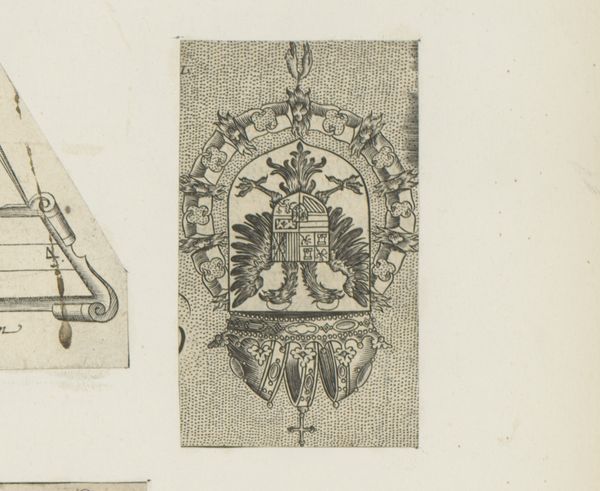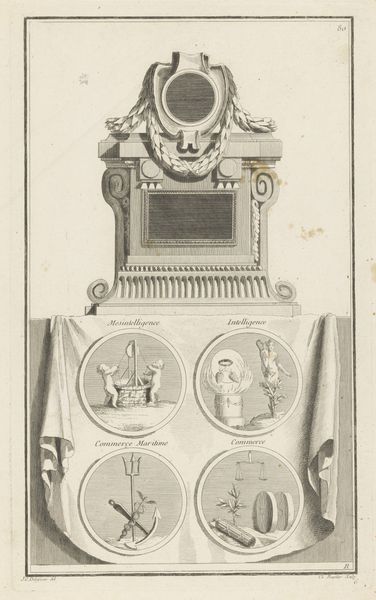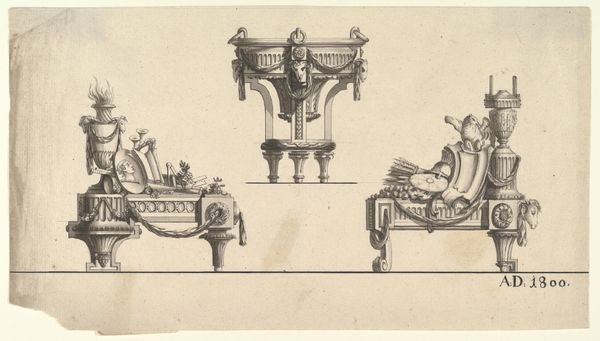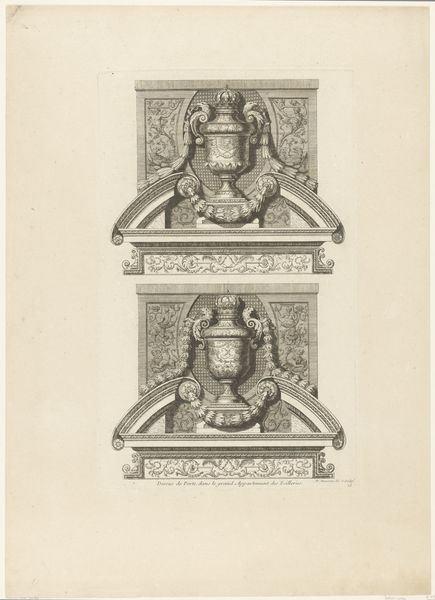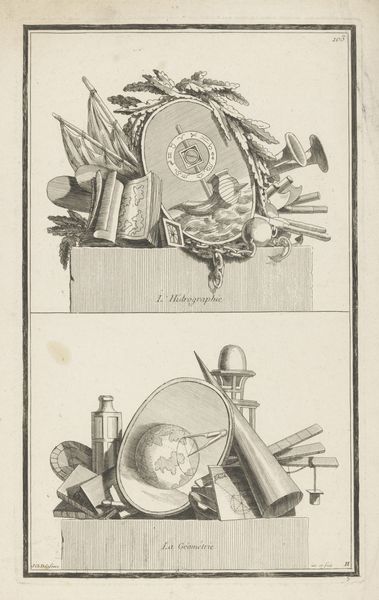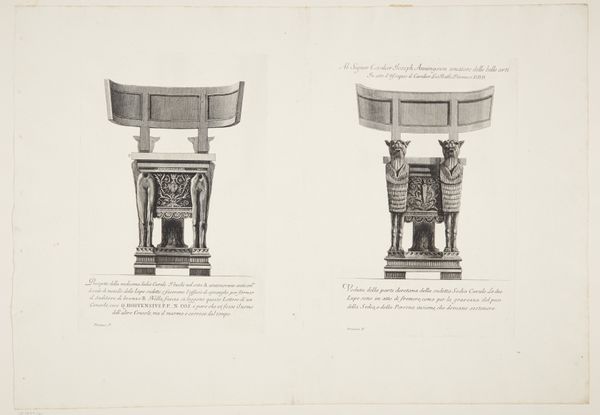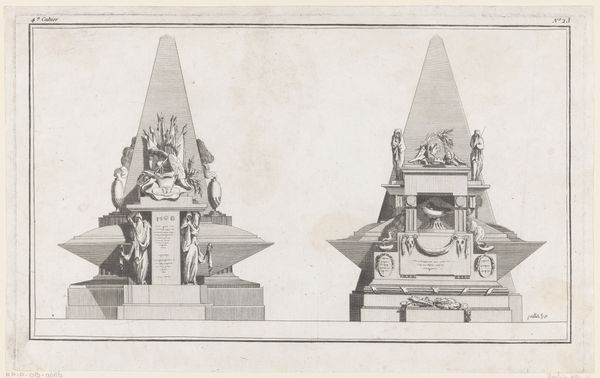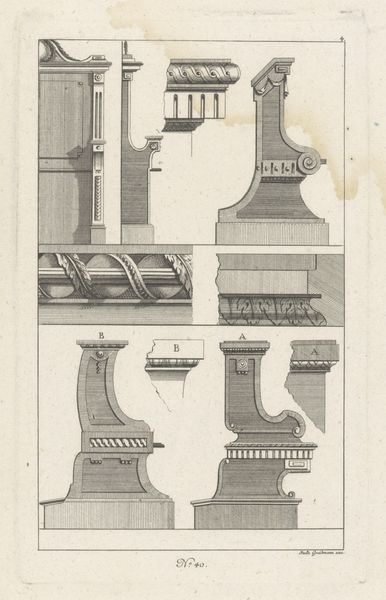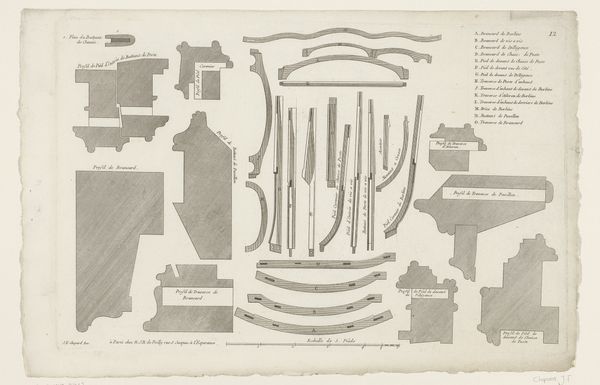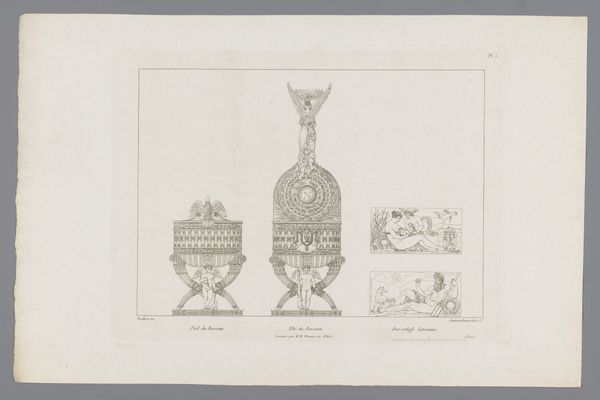
drawing, paper, engraving
#
drawing
#
neoclacissism
#
paper
#
geometric
#
history-painting
#
engraving
Dimensions: height 229 mm, width 374 mm
Copyright: Rijks Museum: Open Domain
Curator: So, we have Augustin Foin's "Nistombe en muurtombe," made in 1771. It looks like an engraving, primarily using paper. I'm struck by the almost diagrammatic way it represents these tomb structures. How would you approach interpreting it? Editor: Well, I notice the clear, almost architectural lines, depicting these elaborate tomb designs. There's a starkness to the presentation. It's hard to feel an emotional connection; it feels more technical. Given the clean lines and geometric presentation, I'm curious, how do you think the materials influence its meaning? Curator: Consider the function of engraving at that time. It was a reproductive medium, designed for wide distribution of visual information. So, this isn’t about the preciousness of a unique artwork, but rather disseminating designs and, arguably, ideologies. The choice of paper, engraving - it speaks volumes about intended reach. Are these tombs that actually existed, or proposed designs? What societal power structures do these funerary monuments and their representation reinforce or challenge? Editor: I hadn't considered the printmaking aspect. It shifts my perspective completely. So, instead of focusing on artistic expression, we should consider this as a record or proposal? It sounds like this work is directly related to 18th-century printing production. Curator: Precisely! It points to a society invested in reproducing and consuming certain kinds of visual rhetoric around death and remembrance. How readily were these accessible? Who were the targeted viewers? Thinking about those consuming this kind of image shifts its meaning considerably. And consider that "neoclassicism" suggests the elites' power expressed in the return to geometric and linear design conventions. Editor: Wow, looking at it now, I am viewing how class distinctions are also visible in art forms. I never knew engraving production could affect this so profoundly. Curator: Exactly, and what can be replicated easily also becomes easier to obtain by anyone and used for political ends. Always examine the role and nature of material conditions. Editor: Definitely something I’ll keep in mind from now on when I analyze works!
Comments
No comments
Be the first to comment and join the conversation on the ultimate creative platform.


